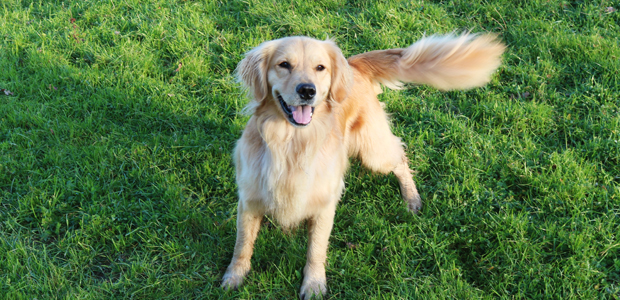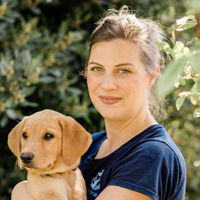Why do dogs wag their tails?
Our dogs only wag their tails when they’re happy, right? Actually, a waggy tail doesn’t always mean a happy pooch. Dogs are capable of expressing a range of emotions, and they use their tails to communicate with us and other animals.
Let’s take a look at what it means when your dog wags their tail and how to tell how they’re feeling.
why does a dog wag its tail?
As any owner will tell you, dogs are emotional animals, which is why we form such strong bonds with our four-legged friends.
When a dog wags their tail, they could be conveying a number of different emotions. They might be feeling happy or excited, or they could be feeling nervous, threatened or anxious.
The positioning and speed of their tail movements, combined with their body language, helps to give us clues about how they are feeling.
If a dog is happy or excited, they will wag their tail back and forth enthusiastically. Some people call this motion 'helicopter tail’ and you might have seen it when you’ve been away from your dog for a small period of time. This is your dog telling you that they missed you and they are really happy to see you again.

Some dogs move their whole body when they wag their tails, again this is generally a sign that they are happy and pleased to see you, although it can be used when a dog is unsure and attempting to communicate they are no threat.
If your dog's tail is sitting in a natural position, this means that they are feeling calm and relaxed.
If your dog’s tail is tucked or clamped between their legs it’s normally a sign that your dog or worried or scared. The tail may still wag in this position, but in this case it is not a happy wag! A stiff tail normally means that the dog is contemplating an aggressive reaction.
How can I tell if my dog is worried?
If your dog is trying to tell you that they are feeling worried or scared, their tail position won’t be the only way of letting you know. Their facial expression and body language will give you clues about their emotional state.
They might start to lick their lips or yawn, or they might act aggressively or defensively by growling or flashing their teeth. Keep an eye out for these physical and emotional responses when your dog encounters something they are unsure about.
If your dog displays any of these signs, give them space or calmly remove them from the situation. It’s important that you recognise these signs in your dog. By being alert and paying attention to your dog’s emotions, you can help to keep them happy, calm and safe.

What does the wag direction mean?
Research has shown that dogs convey how they are feeling depending on the direction in which they wag their tail. It might sound farfetched, but it’s been shown that dogs wag their tail to the right to show positive emotions, and to the left to show negative emotions.
Tail docking
Some dogs have long, swooping tails, others have curly ones and some dogs have short tails. Whatever they look like, a dog’s tail is vital to help them communicate.
When a dog has a docked tail, they lose the ability to communicate through it, which as discussed, makes up a vital part of their ability to show us how they are feeling.
Docking a dog’s tail is illegal in the UK. Not only is it a painful and unnecessary procedure that hampers their ability to communicate, it can also affect their balance and their ability to swim effectively.
Need more info?
For further help and advice on your dog’s behaviour, have a chat with your local vet. Find your nearest vet using our handy Find a Vet page.

